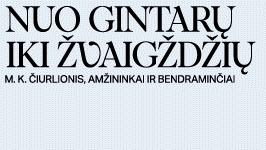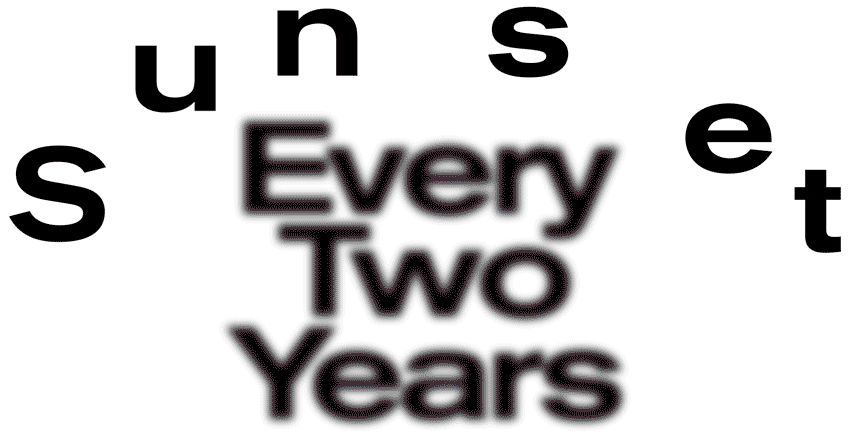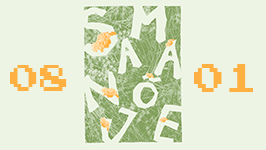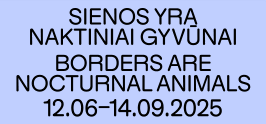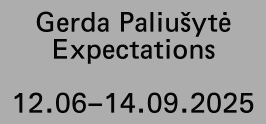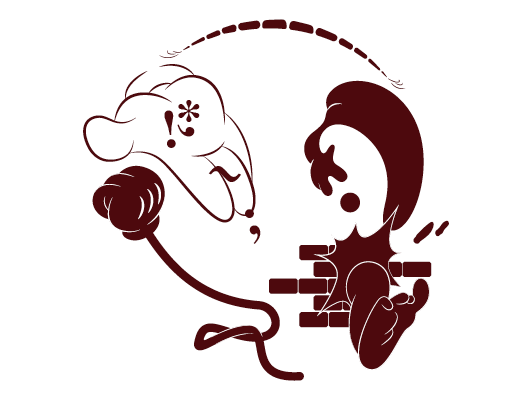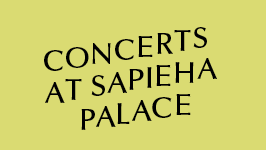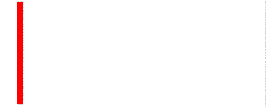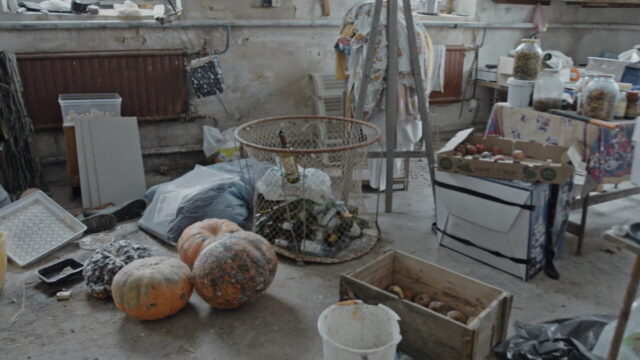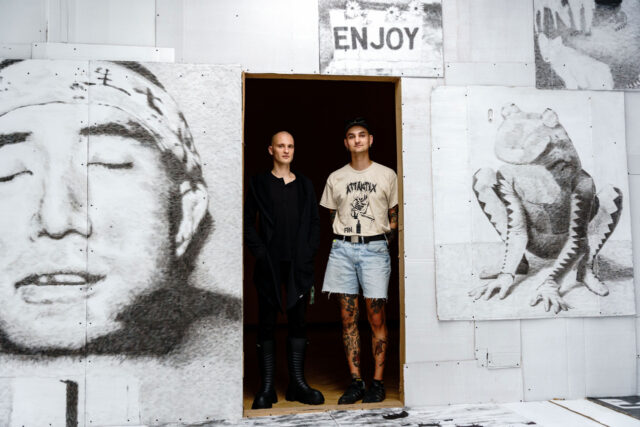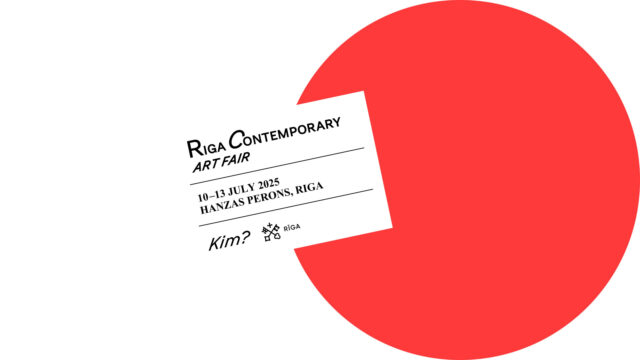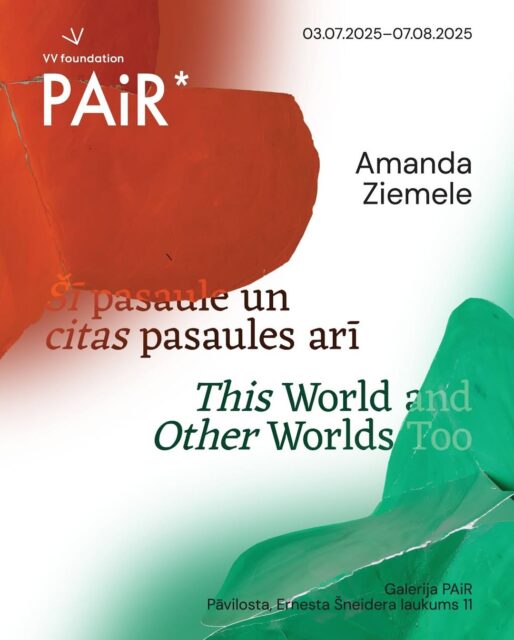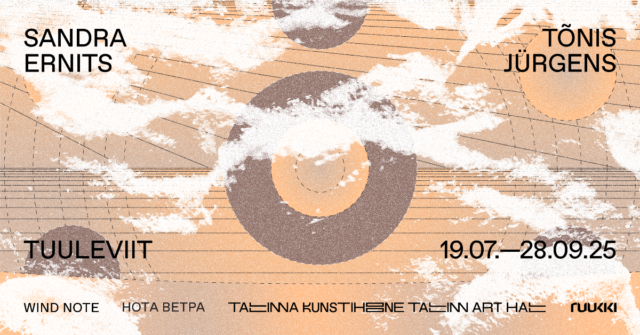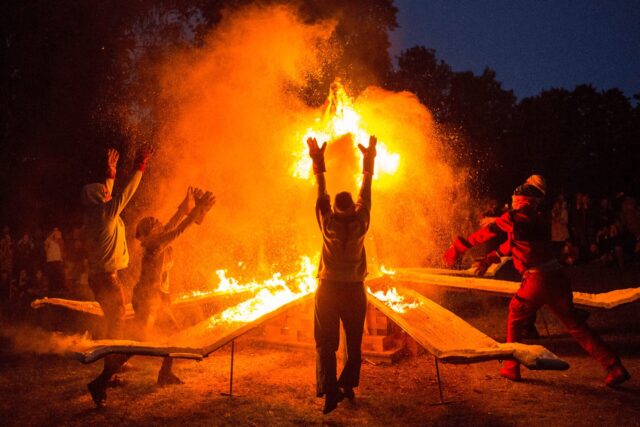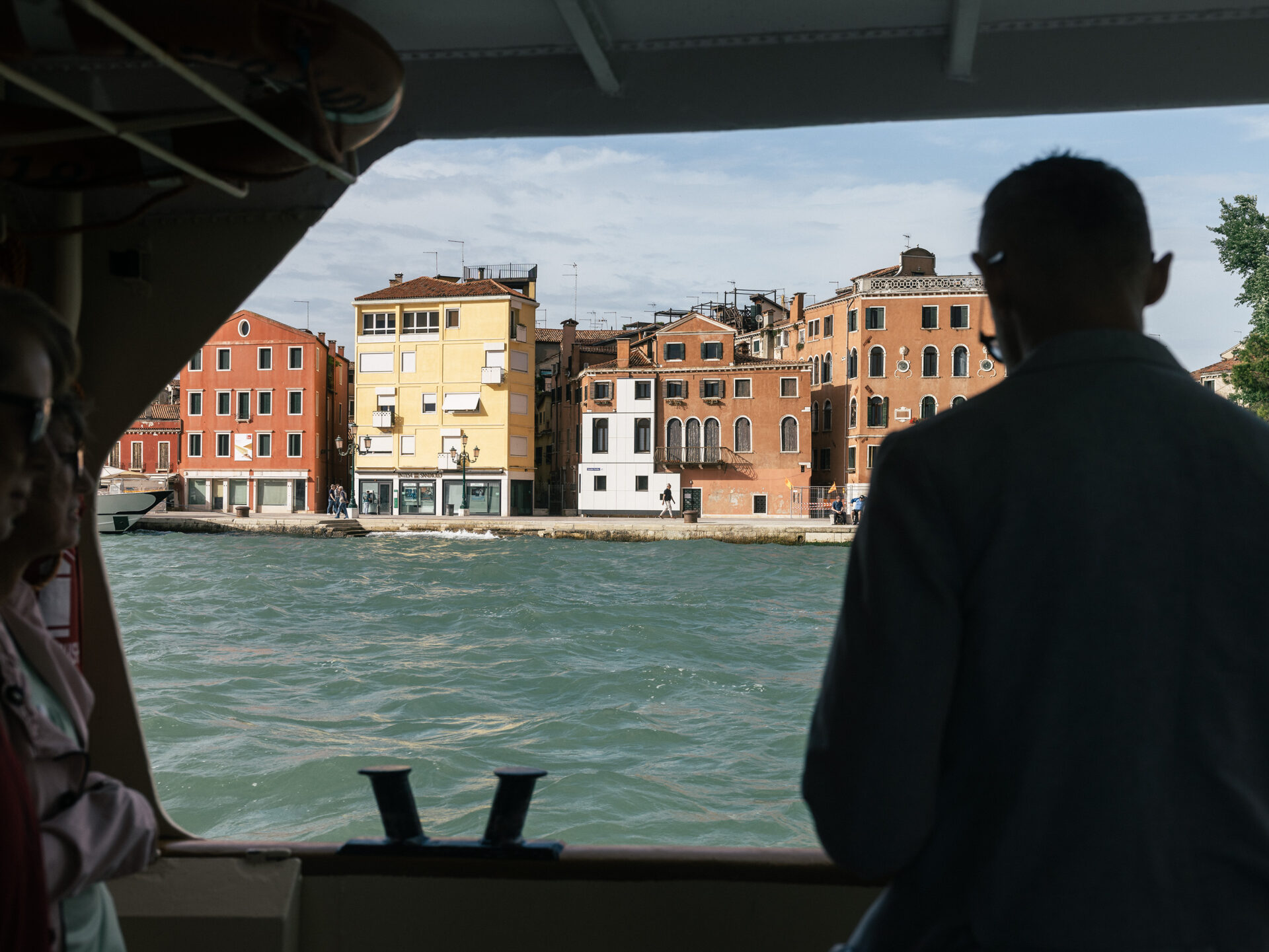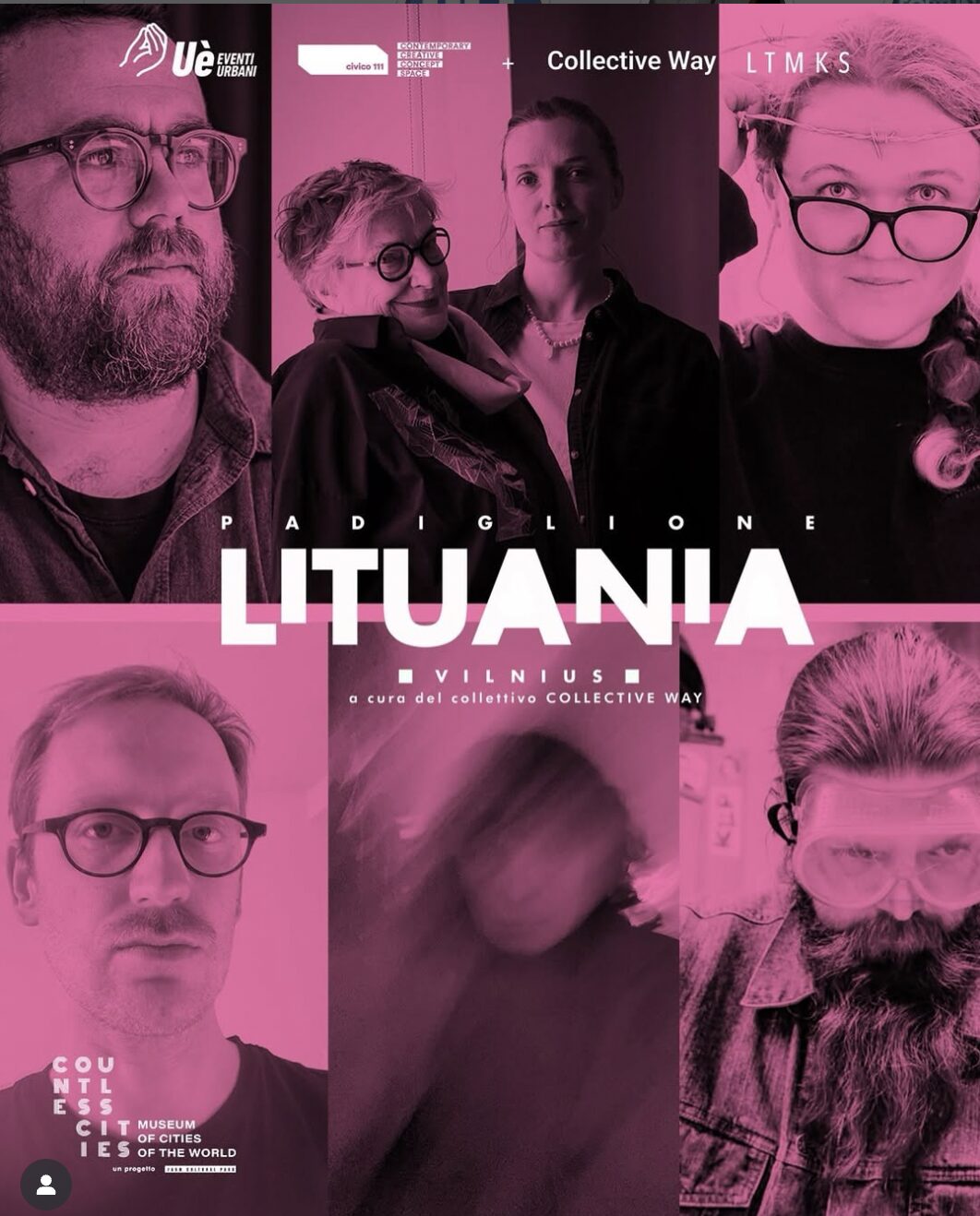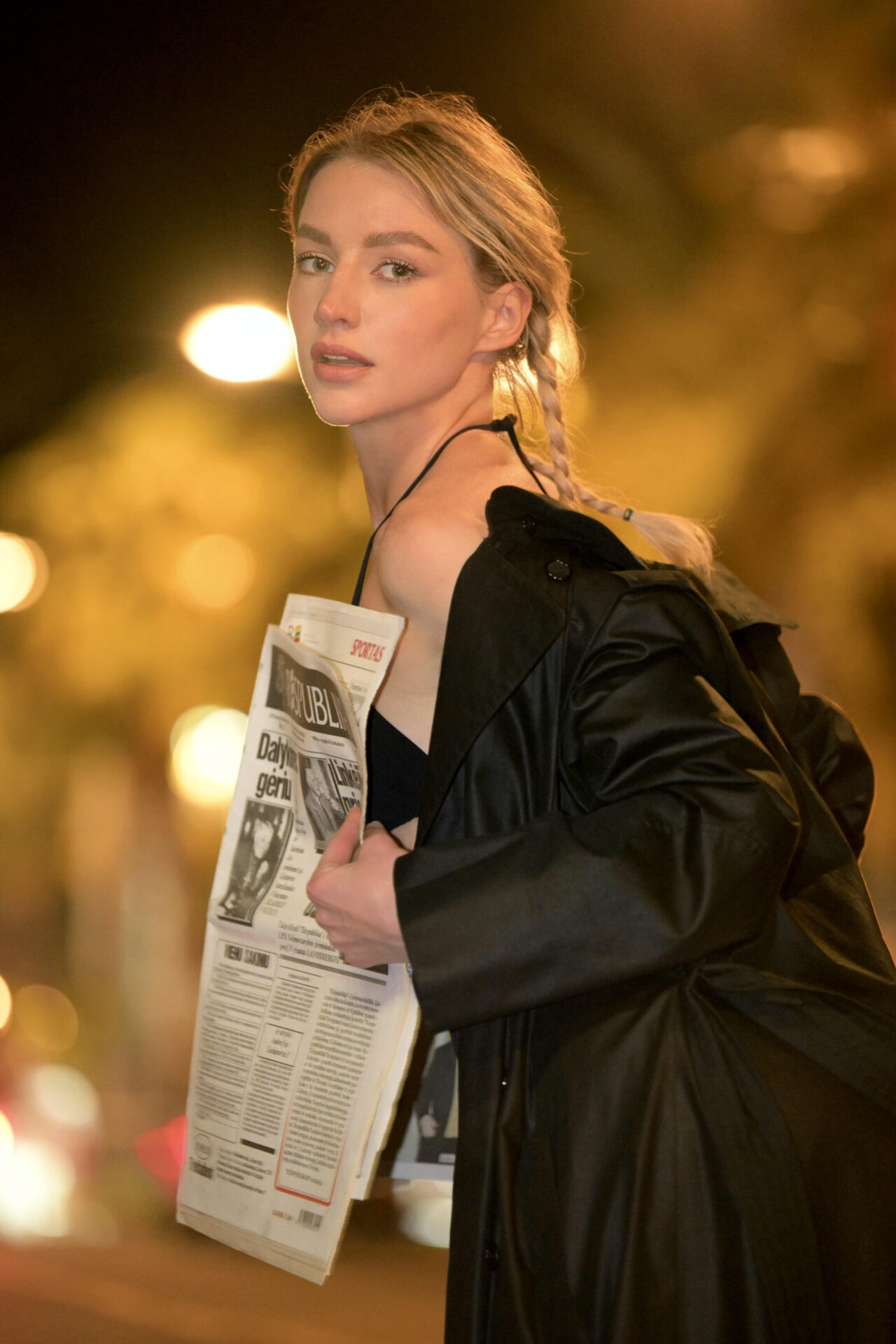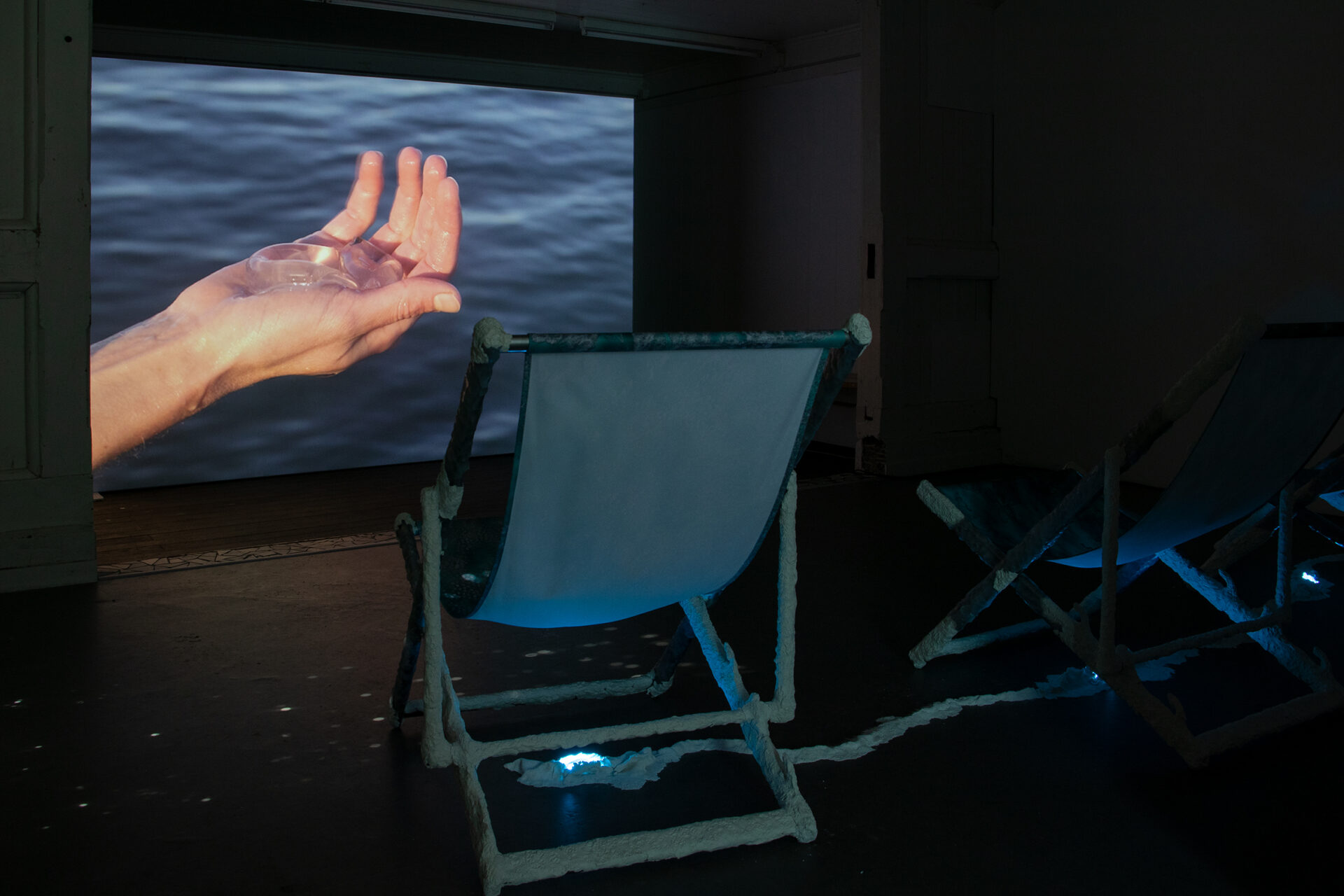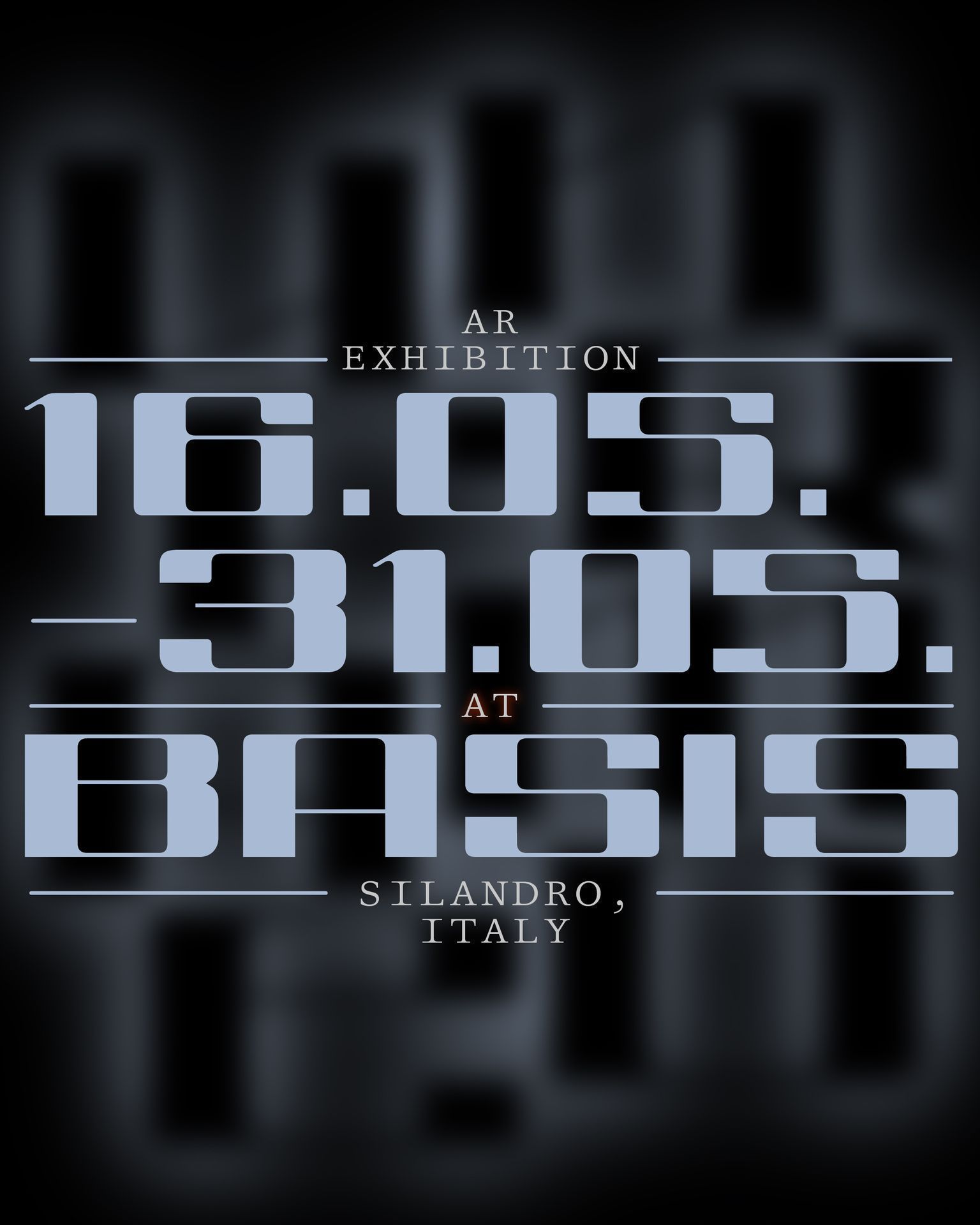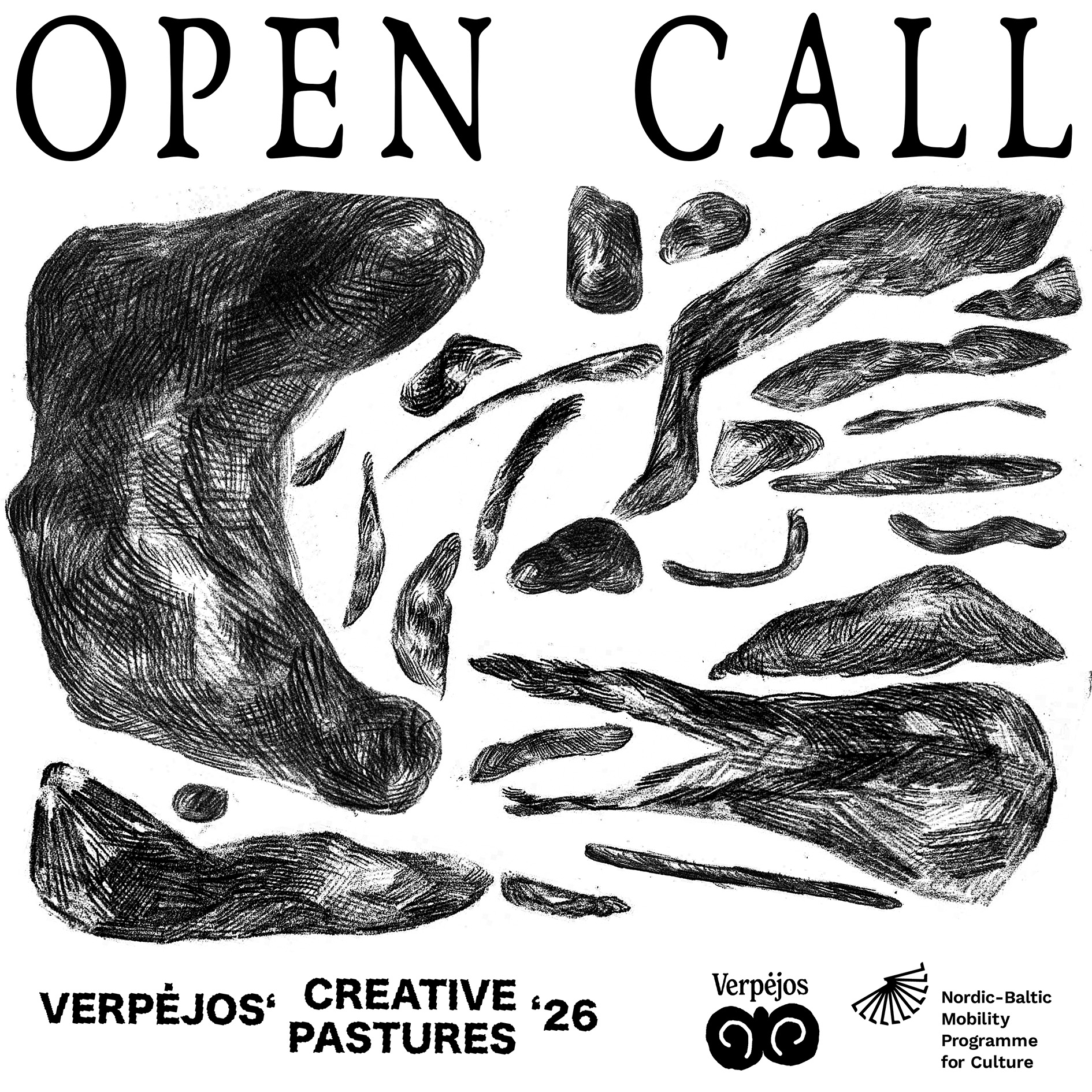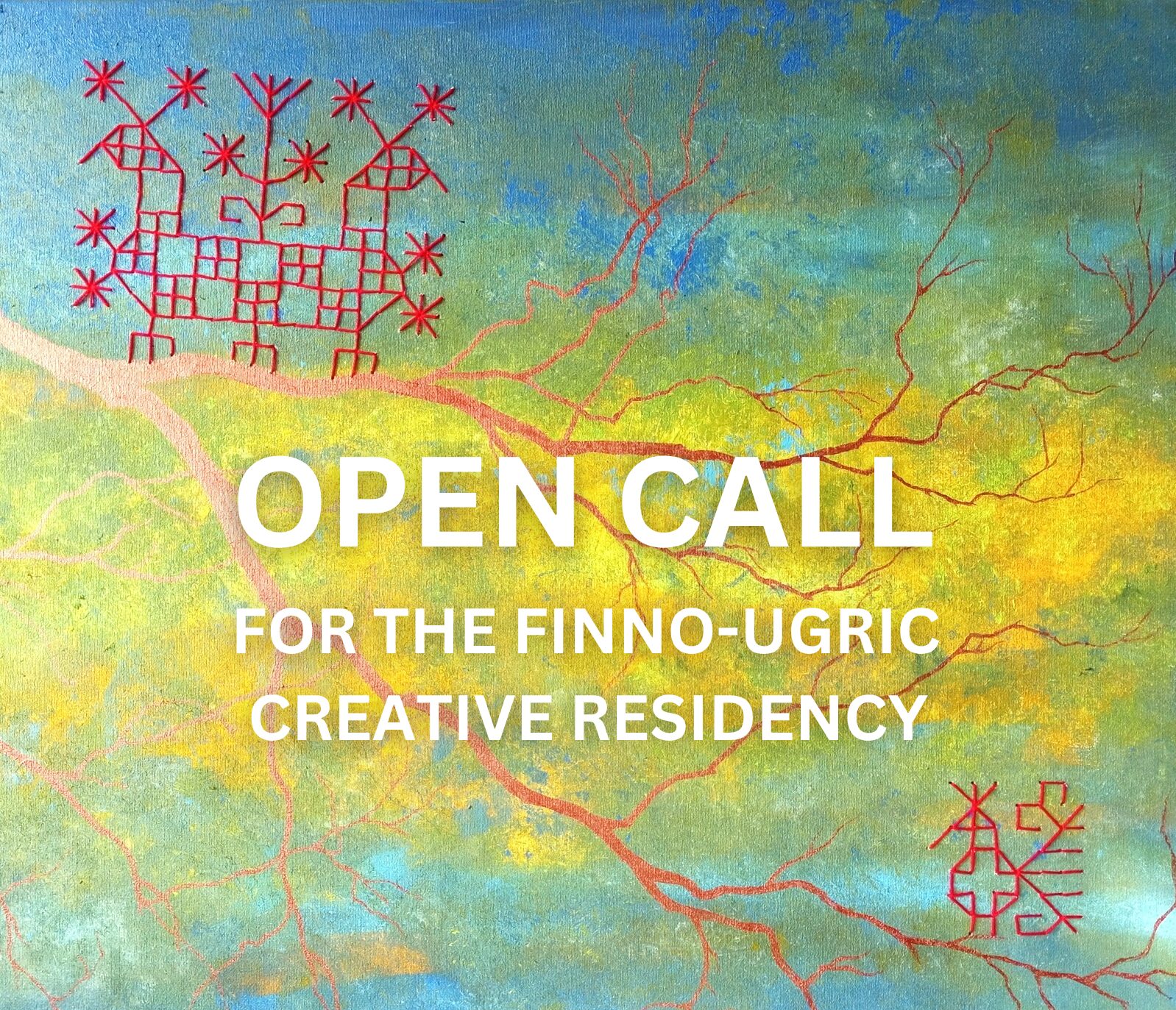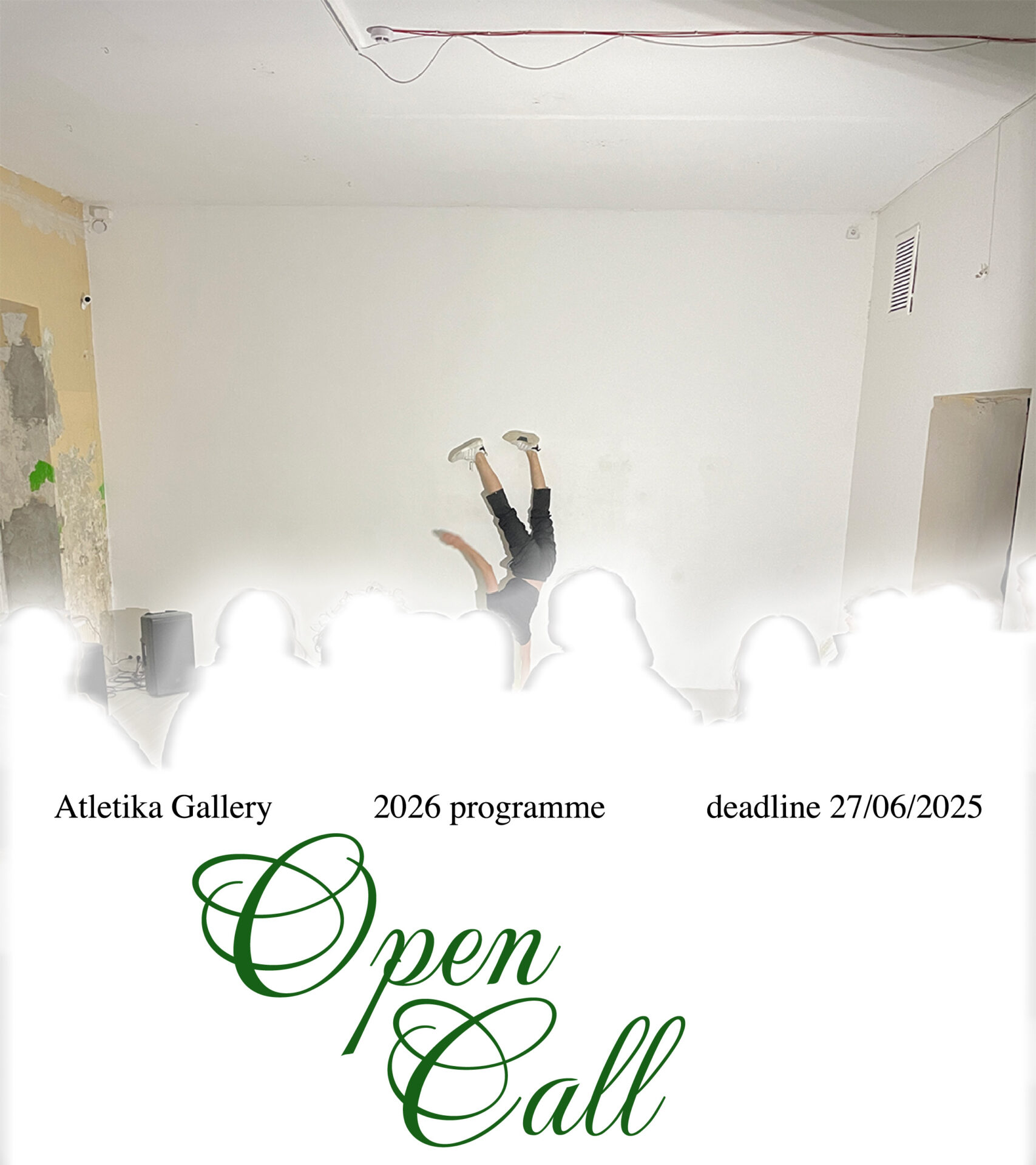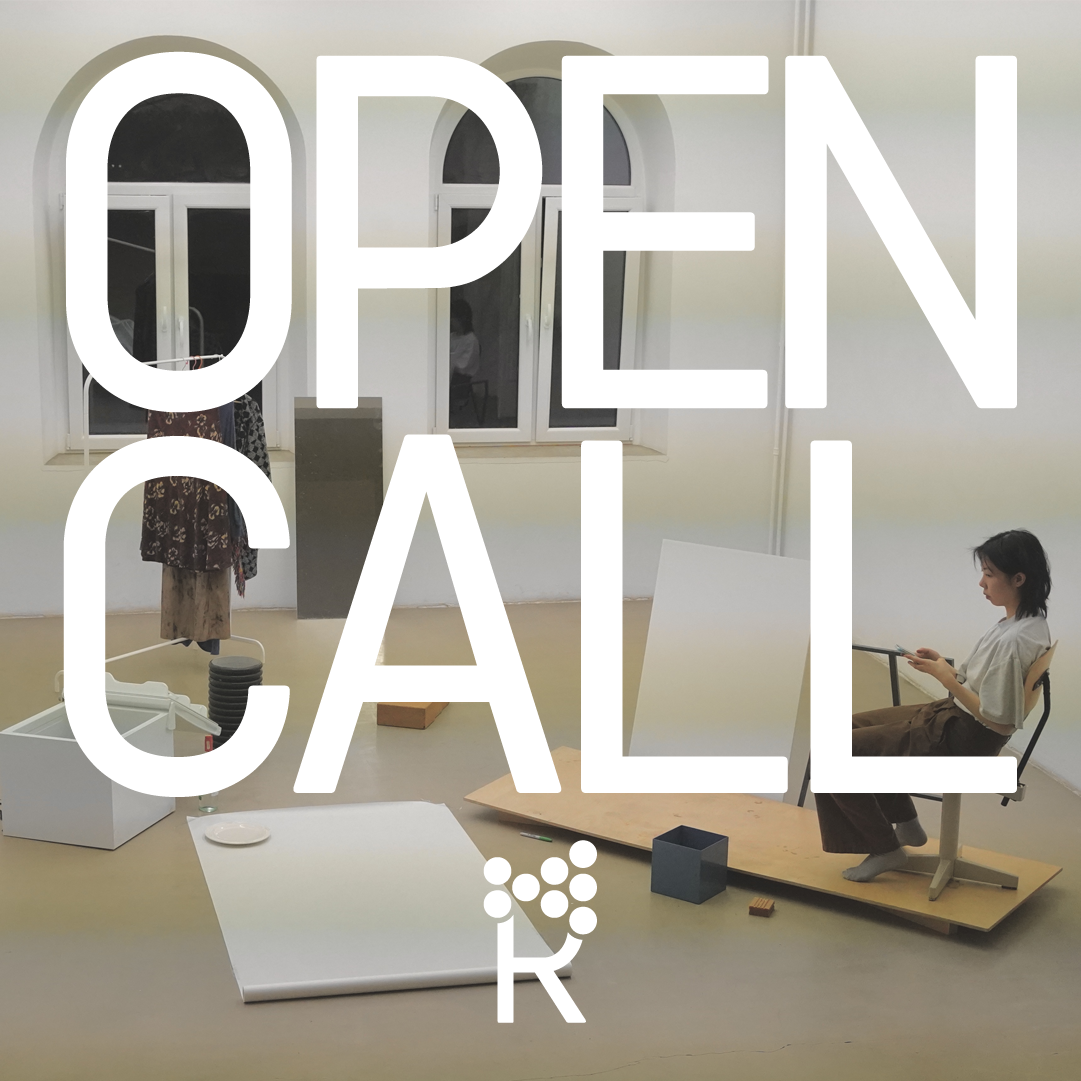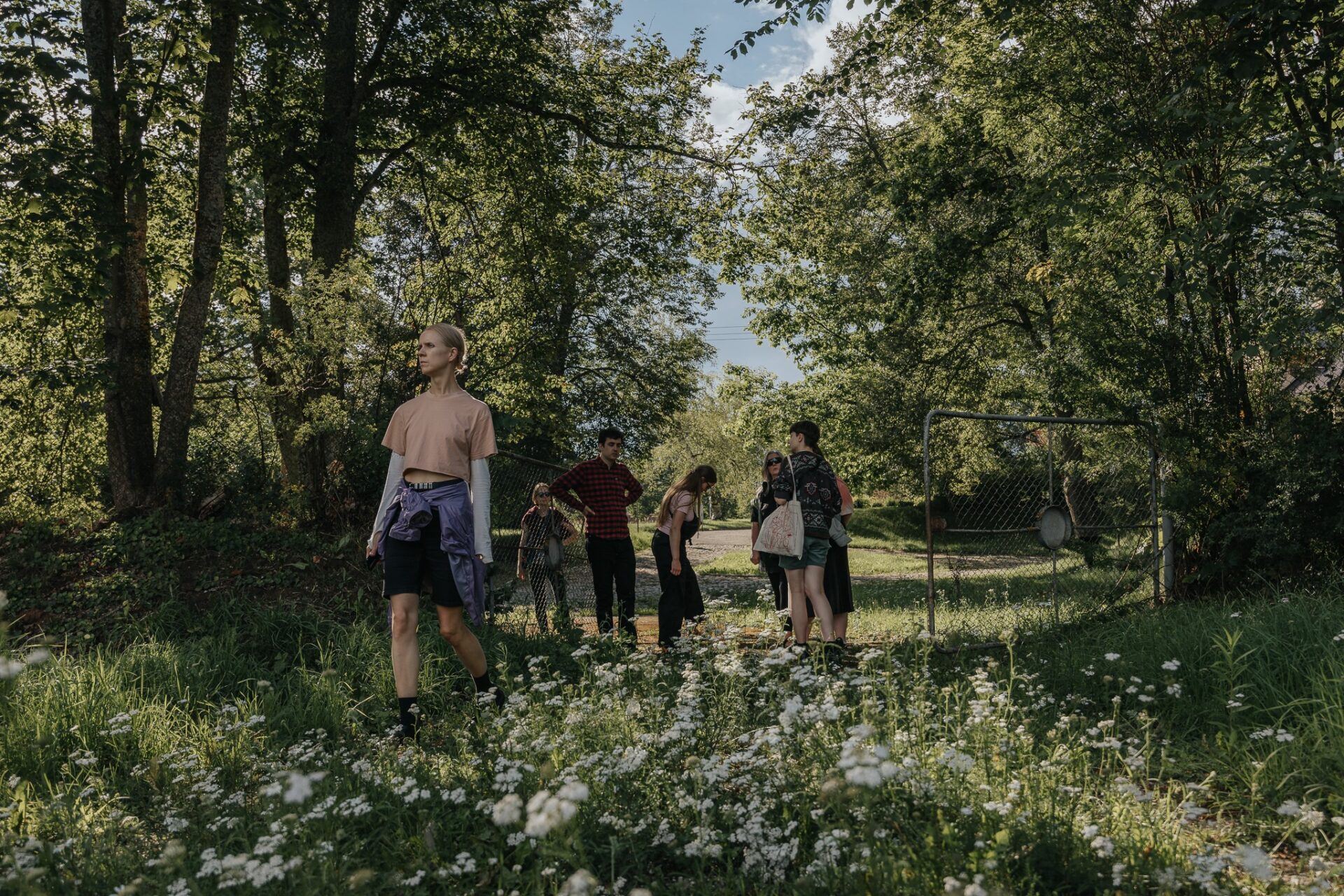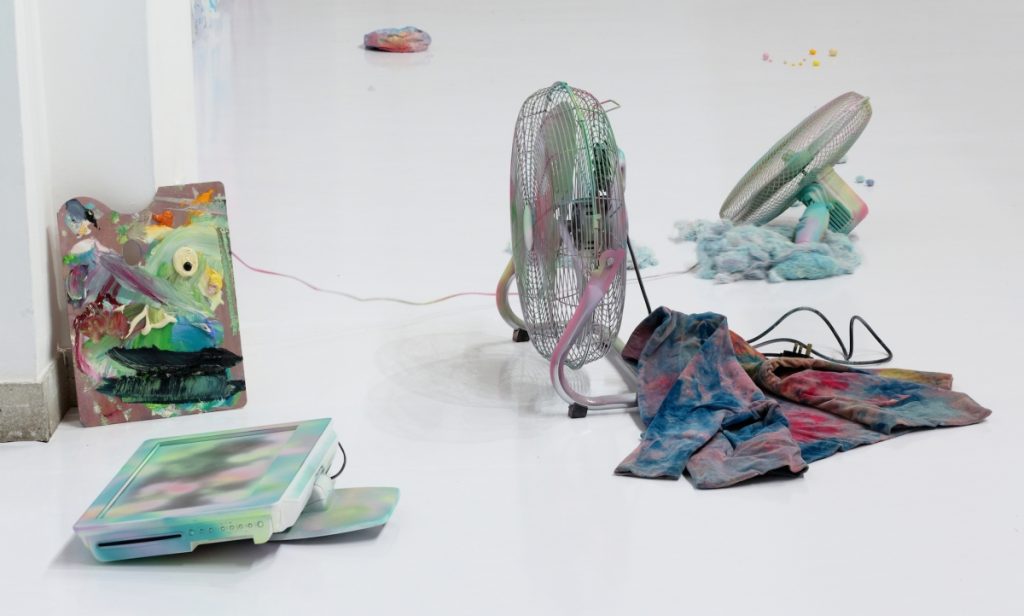
Merike Estna, Blue Lagoon, installation, 2014. Courtesy of Art Museum of Estonia. 16th International Vilnius Painting Triennial ‘Nomadic Images’. Photo: Gintaras Janavičius
Alberta Vengrytė: Towards the end of November, one of your works – an installation entitled Blue Lagoon (Blue Lagoon first showed in 2014 in a solo show curated by Kati Ilves for KUMU Art Museum, Tallinn, Estonia) was presented at the 16th Vilnius Painting Triennial.
The curatorial decisions for this triennial looked at nomadic visions of the contemporary world, the image, and the perception of ever-changing visual trajectories. Anti-hierarchical, scattered, multifaceted and hardy-structured strategies for perceiving the exhibition-whole offered an opportunity to tap into a voyage of associations through a Deleuzoguattarian labyrinth of expanding infinities, net spontaneity and decentralised combinations of objects and experiences. Leaving theory aside for a moment, from an unbiased position of an experiential labyrinth-traveller in which you are the main agent, I would like you to explore your personal background and think about a few of the notable points in your artistic career.
Could you generate concise textual sceneries of the past few years, including any special moments for you as a creator? It would also be interesting to learn a bit more about the changes in your life, when you have left Estonia for London and later, among many other shows, held an exhibition in Mexico. What mental and material images has this nomadic routine provoked?
Merike Estna: I actually left Estonia a while back in 2007, and have just returned to live here again in July 2016. You are right to say that I have lived a life of constant flux for the last 4 years, which is a life of a common art professional, of course. As our world has expanded, so has the field of painting in general. One often ends up with a suitcase being their main companion for life.
I realised the importance of this last year when I arrived in Mexico City for a residency and a show, and my suitcase had got lost on the way. I felt extremely stressed and anxious over the next four days that it took them to locate it, and only later realised the great importance of a suitcase for me.
As someone who had spent more than half of the year away from where I was based, the suitcase became a symbol of home for me. Wherever I’d be, as long as I had my suitcase I’d feel as though it was my home. It’s important to add though, that I didn’t feel like missing the things in it, but in a way it became the thing that attached me to something familiar and known to me, a rock to hold on to when everything else was unfamiliar, and my safety net.
From 2012 to 2014, I created a project called Travelling with a Painting which departed from this lifestyle in which I carried a painting with me everywhere I had to go, and documented it in the local landscapes I was visiting.
What became important about this was how it helped me to understand that the state of fluidity is a permanent state, and I realised there was no definitive resolution or answer. This is also what I’ve tried to express with my works: the possibility for change and an openness to infinite solutions. For example, Blue Lagoon is a collection of objects that form a lagoon on the floor, but each time they are shown they are installed in a different way.
AV: “A rhizome has no beginning or end; it is always in the middle, between things, interbeing, intermezzo. The tree is filiation, but the rhizome is alliance, uniquely alliance.” This is a quotation from A Thousand Plateaus (1980) by Deleuze and Guattari. Do you find it relevant to the artistic way of being and creating today?
To be more precise, how do you comprehend the role of an artist, especially in our times labelled by self-multiplied images, speeding human perception, virtual-becoming knowledge revising traditional intelligence and all the other marks of the contemporary world, which, I believe, as a contemporary artist and researcher are very familiar to you are they not? Could it be that an artist finds themselves exactly in this intermezzo situation today? What are your personal artistic strategies for investigating, questioning and/or displaying the favourable interfaces and volatile realities of today?
ME: Looking for connections underneath the surface is a state of mind. The way one can experience a piece like Blue Lagoon responds to this state of mind among other things, and to the amount of information available, which can almost create an attention deficiency as there’s always a next bit of information just a swipe away. Everything is easily accessible and the ever-updated research in any given subject is in constant renewal, so there can be no final fixed solution other than the connections beneath, and the multiple viewing points one enters become infinite possibilities.
AV: These days I‘m working on theorising the concept of ‘performativity’ in Lithuanian contemporary art, based on Erika Fischer-Lichte’s The Transformative Power of Performance: A New Aesthetics (2008) and Martin Heidegger‘s philosophical writing, so you can imagine how excited I was to discover that within your latest solo show DOMESTICMINDCRAFT (DOMESTICMINDCRAFT, 2016 March 14-January 30, curated by Octavio Avendaño Trujillo at Karen Huber Gallery, Mexico City, Mexico) you took a critical stance towards painting as an institution, while holding the normative of gender and language in painting at stake, thus allowing the visiting audiences to engage with the performative aspects of their experience.
I find it impressive, how the corporality of your artworks connected to the architectural whole of the exhibition and the pictorial space became active agents inviting critical re-thinking, refined humour addressed towards the cult of masculinity, and the exchange of subjectivities. Could you tell me more about what role the phenomenon of ‘performativity’ first took in your creative preparations, mind-travel, and the final view of the show? Could it ever actually be finite, considering the ideological and the aesthetical stance that it took?
ME: What Octavio was describing, and what I have been considering relevant was actually not only for the show in Mexico City last year, but in my practice in general for quite a few years now. To begin with, I started using colour combinations in 2012 (that you can also see in Blue Lagoon) that were not traditionally accepted, especially in the North Eastern European painting scene that I departed from. Secondly, I started using patterns as my main visual language, trying to highlight and question the hierarchies between traditional craft and painting, as well as the connection to crafts having been traditionally made by women between doing housework etc.
But if we’re talking about ‘performativity’ then actually what I’ve been aiming for is the living artwork, work that is part of life rather than about life, work that stays in flux and lives on, as we no longer live in a moment of stillness, but in a constant state of ebb and flow.

Merike Estna, Blue Lagoon, installation, 2014. Courtesy of Art Museum of Estonia. 16th International Vilnius Painting Triennial ‘Nomadic Images’. Photo: Gintaras Janavičius
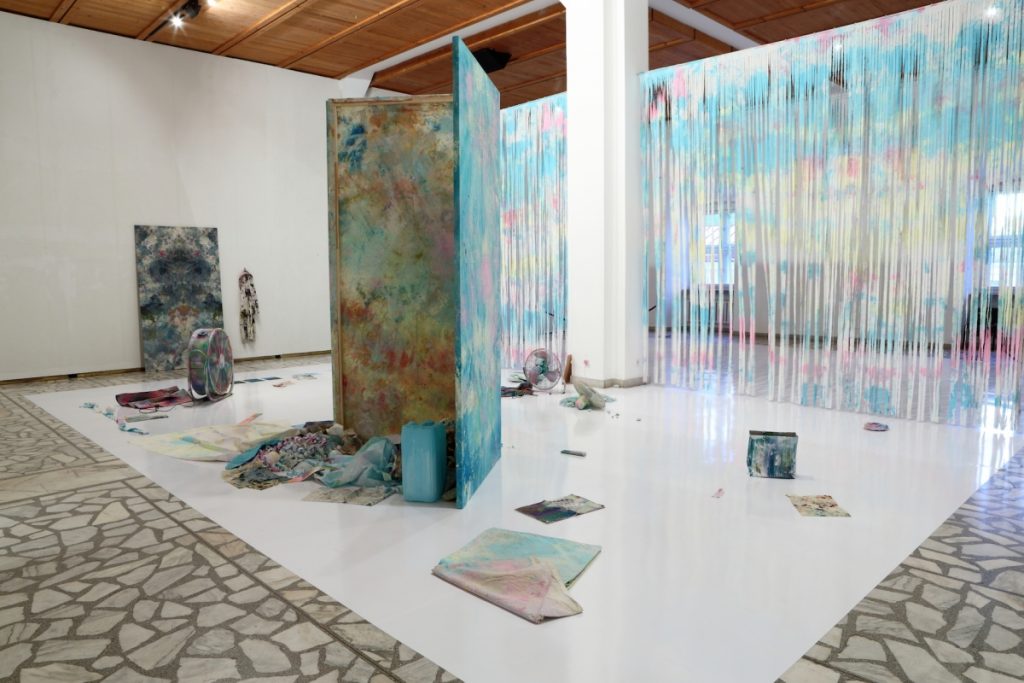
Merike Estna, Blue Lagoon, installation, 2014. Courtesy of Art Museum of Estonia. 16th International Vilnius Painting Triennial ‘Nomadic Images’. Photo: Gintaras Janavičius
AV: While visiting the 16th International Vilnius Painting Triennial, which included your installation Blue Lagoon, I was told that the only option to document the exhibition was to take a selfie as no pictures were allowed. It was probably the first time in my career that the fear of plagiarism – as was explained to me by the invigilator – caused me to make my way through the exhibition in such an eccentric manner, trying to perceive, analyse, participate and memorise its elements. Were the artists aware of this decision? Walking on barefoot, across and through your artwork, led me to reflect on the concept of ‘liveness’, developed by Max Hermann and also Philip Auslander.
From your point of view, what role does contemporary painting take when it encounters the dualism between ‘live’ artworks and those broadcasted by the media? Is it still important to apply painting to encompass the ‘true body’ (of a canvas, an idea, an artist…) and the ‘true space’ (of a gallery, a room, an exhibition etc.), or maybe painting itself becomes a different genre of the media? As I was taking selfies in your installation, it somehow felt like I was artificially interrupting the auto-poetic feedback loop between me and your work because what I was doing wasn’t either real documentation of your artwork, nor the live embodiment of my intellectual experience into the Blue Lagoon. Searching for the best angle and lighting in the show, just to ‘paste’ my own face into it, sort of became a performative action!
ME: I was unfamiliar with this instruction towards photographing the art there, but also this work of mine doesn’t belong to me, but to the Estonian Art Museum. I am not sure if this was mainly down to the fear of plagiarism, or whether it had with protecting the piece from being misrepresented. For instance, following the opening of the triennial, I actually saw some photos of Blue Lagoon on facebook that had got the colours totally wrong and were of horrible quality, so I really felt they misrepresented the work. However, the possibility of making a selfie with it sounds totally appropriate. I’m glad to hear this, as it is the viewer who becomes the participant and the activator while entering the piece.
AV: I would like to invoke the idea ‘emersion of meanings’ to discuss why it was important for you to particularly show Blue Lagoon at the 16th Vilnius Painting Triennial last year, and to also give a little bit of a different angle to some of the traditional questions regarding materiality, semiotics, associative thinking and the relations between elements of your work and the public.
As the triennial’s curatorial vision spanned various different types of artistic approaches from nomadic to rhizomatic ways of creating conceptual meanings in the show, I find it reasonable to connect the previously triggered concept of the rhizome (with its intermezzo alliance) and the tactics of the emersion of different meanings, which lead, paradoxically, through the desemanticisation of individual elements of the artwork and the embodiment of their materiality (not the significance), to the emergence of hardly structured associations, imaginariums, flow of images, thoughts, memories and feelings, thus making it possible for a significant connection between these elements and the viewer to be established.
Do you find this relevant to the logic of your installation and to the exhibition as a whole? What meanings (ideological trends) would ideally emerge while experiencing Blue Lagoon if the visitor was indifferent, a tabula rasa, ready to give up to the flow of each artist’s combining meanings, deliberately programmed by you?
ME: The choice to exhibit Blue Lagoon came from Linas Liandzbergis, and I’m very happy about this decision. If visitors were to enter as blank pages, I’d assume it would be clear and simple to pass through the Blue Lagoon and let the work embrace them as they pass from one object, detail, or viewpoint to another. They literally have to enter the work to experience it, and adjust to it, passing through it with its endless options and combinations. Common objects like fans and TV screens, hats, socks, flags and bags reveal a kind of fragility and familiarity to the piece allowing hidden layers to emerge from underneath the surface of the lagoon, but only appearing to those who are willing to dive into its waters.
AV: Merike, thank you for your time and your thoughts!
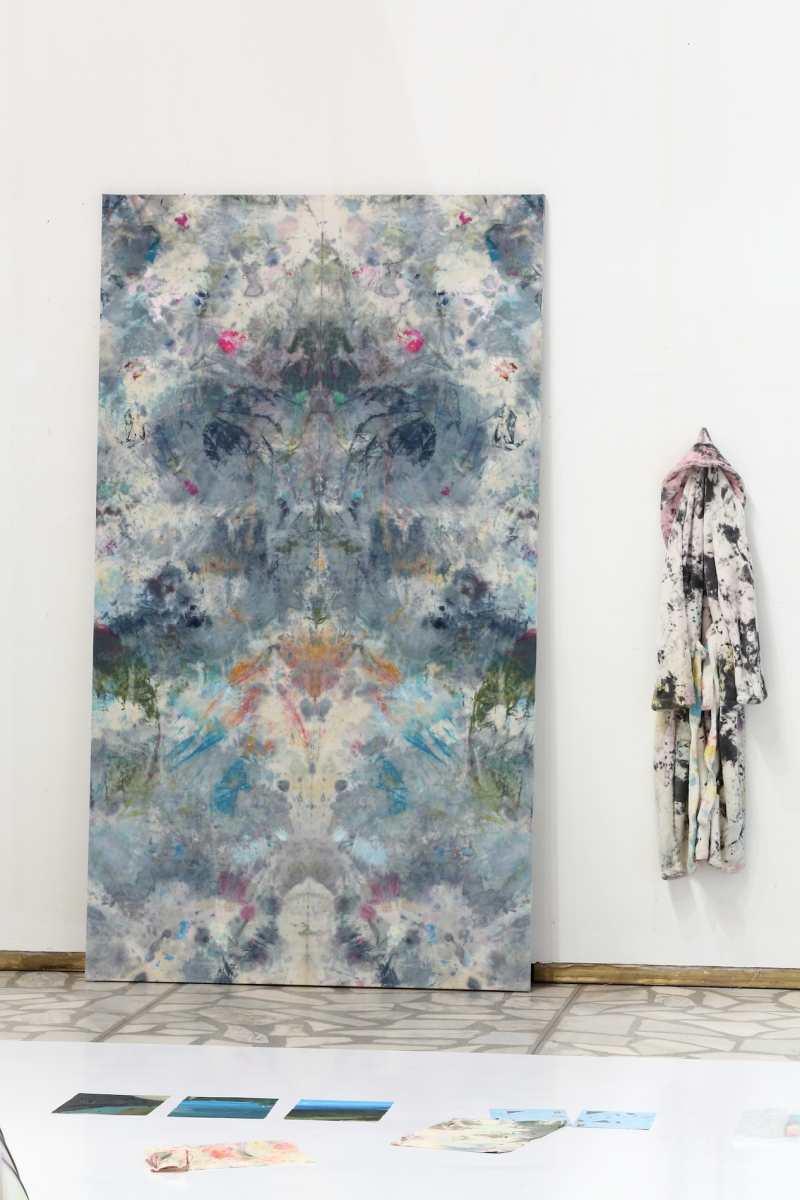
Merike Estna, Blue Lagoon, installation, 2014. Courtesy of Art Museum of Estonia. 16th International Vilnius Painting Triennial ‘Nomadic Images’. Photo: Gintaras Janavičius

